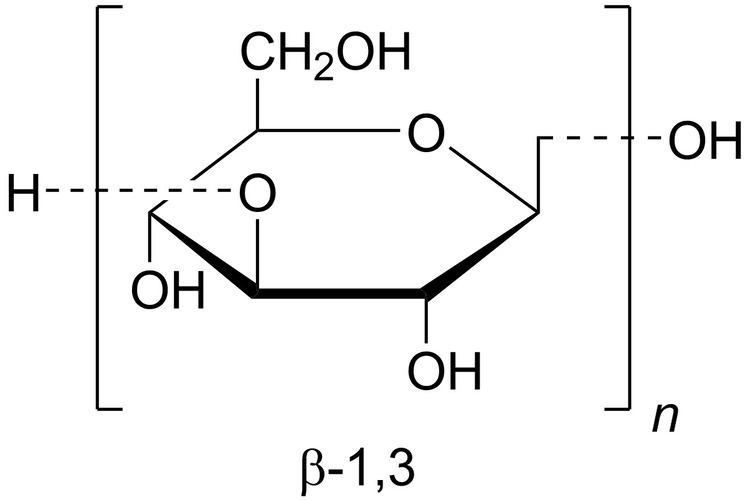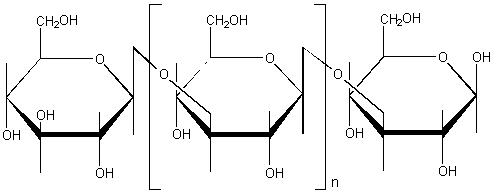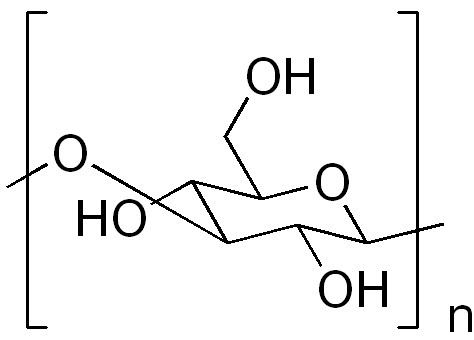Appearance odourless white powder | ||
 | ||
Curdlan is a linear beta-1,3-glucan, a high-molecular-weight polymer of glucose. Curdlan consists of β-(1,3)-linked glucose residues and forms elastic gels upon heating in aqueous suspension. It is produced by non-pathogenic bacteria such as Agrobacterium biobar. The production of curdlan by Alcaligenes faecalis is being developed to be used in gel production as well.

Extracellular and capsular polysaccharides are produced by a variety of pathogenic and soil-dwelling bacteria. Curdlan is a neutral β-(1,3)-glucan, perhaps with a few intra- or interchain 1,6-linkages, produced as an exopolysaccharide by soil bacteria of the family Rhizobiaceae. Four genes required for curdlan production have been identified in Agrobacterium sp. ATCC31749, which produces curdlan in extraordinary amounts, and Agrobacterium tumefaciens. A putative operon contains crdS, encoding β-(1,3)-glucan synthase catalytic subunit, flanked by two additional genes. A separate locus contains a putative regulatory gene, crdR. A membrane-bound phosphatidylserine synthase, encoded by pssAG, is also necessary for maximal production of curdlan of high molecular mass. Nitrogen starvation upregulates the curdlan operon and increases the rate of curdlan synthesis.

Curdlan has numerous applications as a gelling agent in the food, construction, and pharmaceutical industries and has been approved as a food additive by the U. S. Food and Drug Administration.

Curdlan meaning



